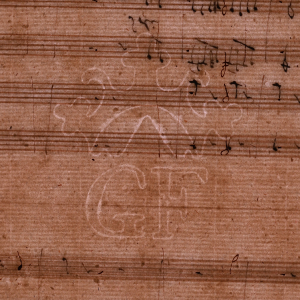- Function
-
- Composer
- Biography
Ignácio António Ferreira de Lima (d. 1818) was an organist, teacher and composer. According to Alegria (1973b, p. 115), in the earlier part of his life he belonged to the Hieronymite monastery at Belém using the name Frei Ignácio António de S. Jerónimo. However, Alegria cites no sources and, moreover, suggests elsewhere that his monastic name was Frei Ignácio António de Santa Teresa (Alegria 1973a, pp. 28, 119).
According to Alegria, Ferreira de Lima was imprisoned in the Cadeia do Limoeiro after leaving the Belém monastery. A partial chronology of Lima’s whereabouts after 1799 can be reconstructed from the title-pages of some of his works preserved at Évora Cathedral, including several, dated between 1799 and 1810, that were apparently composed in the Limoeiro prison (Alegria 1973a, p. 70; Marques 2021, p. 295); others have indications that they were written in Madrid (17 June 1807) and Serra do Bispo (21 June 1805) (Alegria 1973a, p. 70). During the period of his supposed imprisonment, Ferreira de Lima referred to himself as the Mestre de Capela of a military fort, the Praça de Campo Maior (Alentejo) (P-EVc, Missas pro Defunctis-II-7).
Lima was nominated Mestre de Capela of the Sé de Évora (Évora Cathedral) in December 1816 in succession to Francisco Inácio Moreira (Alegria 1973b, p. 113; Marques 2021, pp. 246n-247n, p. 270). The document registering this appointment describes him as ‘priest of the order of Saint Peter, music teacher and resident of Campo Maior’ (‘Presbítero de S. Pedro Professor de Muzica morador na villa de Campo Maior’; Alegria 1973b, p. 124).
There is currently no catalogue of Lima’s works and no attempt has yet been made to identify the number of autographs that exist, though they appear to survive in considerable number at P-EVc.
José Augusto Alegria, Arquivo das Músicas da Sé de Évora (Lisboa: Fundação Calouste Gulbenkian, 1973) [= 1973a].
José Augusto Alegria, História da Escola de Música da Sé de Évora (Lisboa : Fundação Calouste Gulbenkian, 1973) [= 1973b].
Rita Falerio, ‘Elementos biográficos de compositores eborenses do final do século XVIII e início do XIX: contributos do Arquivo Distrital de Évora’, Boletim do Arquivo Distrital de Évora, 8 (2019), pp. 76-89.
António Jorge Marques, ‘Marcos Portugal nos arquivos eborenses: o papel do Agostinho Descalço Frei Fernando José da Conceição Figueiredo’, in Sonoridades Eborenses, ed. Vanda de Sá, Rodrigo Teodoro de Paula, Antónia Fialho Conde and António Camões Gouveia (V. N. Famalicão: Edições Húmus, 2021), pp. 233-310.
Filipe Mesquita de Oliveira, ‘A Formação orquestral durante o período final do Antigo Regime no contexto dos fundos musicais da Sé de Évora – o testemunho da obra de Ignácio António ferreira de Lima’, in Música instrumental no período final do Antigo Regime: contextos, circulação e repertórios, ed. Vanda de Sá and Cristina Fernandes (Lisboa: Colibri, 2014), pp. 251-278.
Ernesto Vieira, Diccionario biographico de musicos portuguezes: historia e bibliographia da musica em Portugal, 2 vols. (Lisbon: Typographia Mattos Moreira & Pinheiro, 1900), ii, p. 34.
- Source(s)
- Handwriting identifiers
-
- C-Clef
-
- Other
- F-Clef
-
- Type 2
- G-Clef
-
- Type 1
- Images
-
-


























